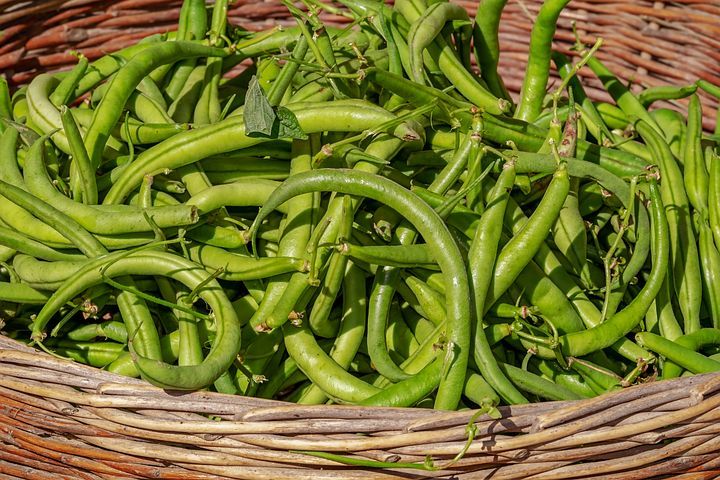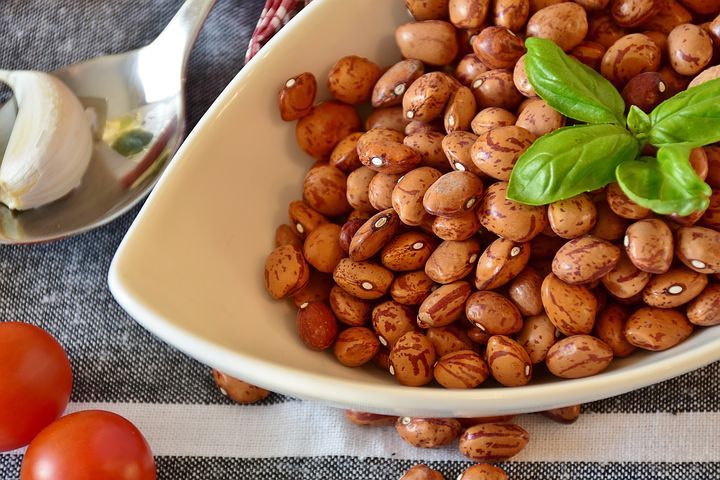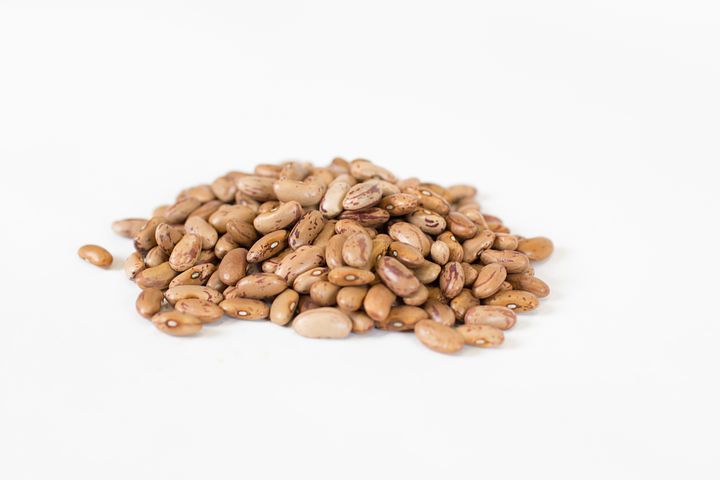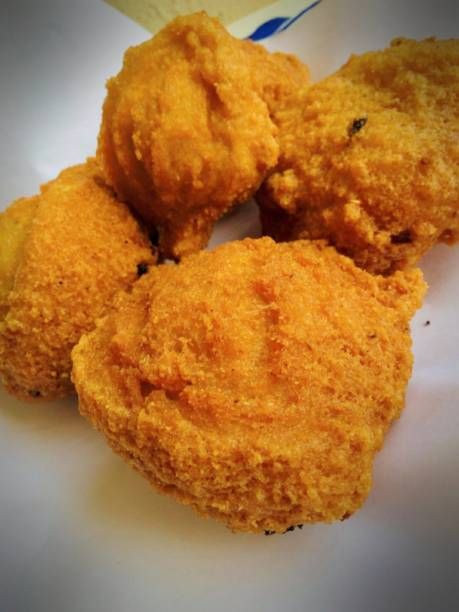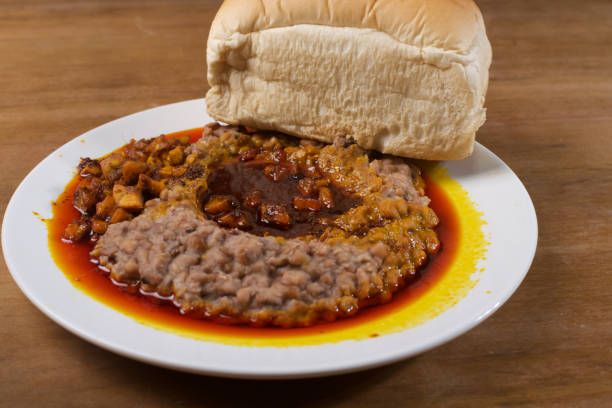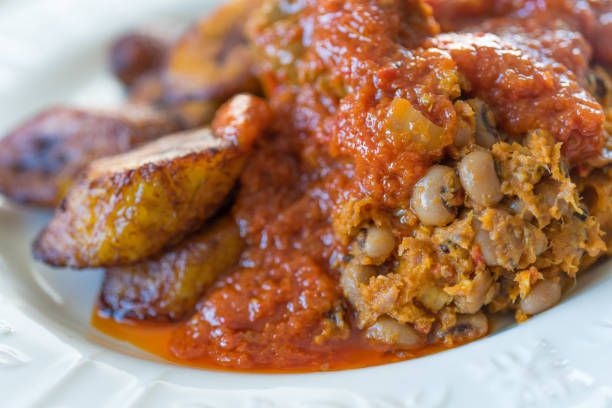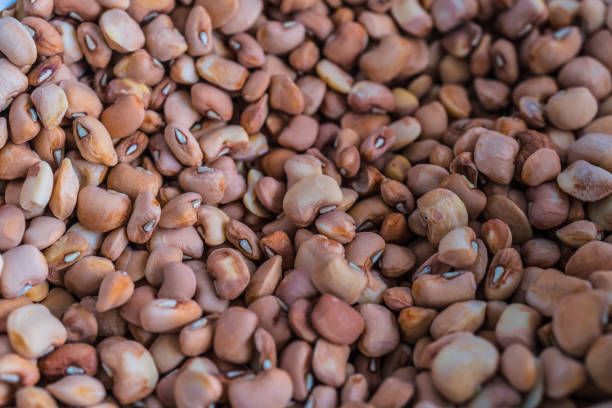Beans and it's consumption
Beans is a type of legume that is widely consumed around the world. They are good source of protein, fiber, vitamins, and minerals, making them a nutritious addition to any diet.
Beans can be prepared in different ways, including boiling, steaming, or even frying. In
In Nigeria, we prepare beans in a lot of ways, including in soups, salads, and lots more.... Outside Nigeria, it can be used on dips, casseroles and even stews.
One thing to keep in mind when cooking beans is that they need to be soaked before cooking to help reduce cooking time and make them more digestible, or sometimes per boiled. Soaking and per boiling also helps to remove some of the impurities on the beans.
Where is beans cultivated the most
Beans are widely cultivated around the world, but the countries that produce the most beans may be different depending on the type of bean.
What is it used for?
Beans have many uses, here are a few examples:
Food: Beans are food in many cultures and are used in a wide range of dishes. They can be used to make soups, stews, salads, casseroles, which I mentioned earlier on.
Nutrition: Beans are rich in protein, fiber, vitamins, and minerals. They are low in fat and calories and can help to reduce the risk of diabetes and some certain types of cancer.
They are also good source of plant-based protein, which makes them an important food for people who follow a vegetarian or vegan diet.Agriculture: Beans are important crop for many farmers around the world. They are often grown in rotation with other crops to help replenish soil nutrients and improve soil health. They are also used as a cover crop to help prevent erosion and improve soil quality.
Industry: Beans are used in a lot of food processing industries to make products such as bean flour, protein isolates, and texturized vegetable protein. They are also used in the production of animal feed and other industrial products.
This beans we're talking about is a very important and versatile crop with lots of uses. We will know some of the uses
Beans in Nigeria
Beans are important crop in Nigeria, and it's a food for many Nigerians. The most commonly consumed types of beans in Nigeria include black-eyed beans, brown beans, and honey beans.
Beans are rich source of protein, fiber, vitamins, and minerals, making them an important food for many Nigerians, especially those who cannot afford more expensive sources of protein.
In Nigerian cuisine, beans are used in a variety of dishes, including akara (bean cakes), moimoi (bean pudding), ewa agonyin (stewed beans), and gbegiri (bean soup). Beans are often cooked with spices such as onions, garlic, ginger, and chili peppers, to add flavour and nutrition.
However, one challenge in Nigeria is the high level of contamination of beans with pesticides and other chemicals, which can pose health risks to consumers. The Nigerian government has taken steps to address this issue by introducing regulations and guidelines for the production and sale of beans, and by increasing inspections of markets and food processing facilities.
Uses of beans in Nigeria
Beans are important food in Nigeria, and they are used in a lot of dishes.
Here are a few examples of how beans are used in Nigerian cuisine:
Akara: Akara is a popular breakfast food in Nigeria made from ground beans that are mixed with spices, onions, and other ingredients, and then deep-fried. Akara is usually served with bread, pap (cornmeal porridge), or custard.
Moimoi: Moimoi is a steamed bean pudding made from ground beans that are mixed with spices, onions, and other ingredients, and then wrapped in leaves or foil or leather and steamed. Moimoi can be eaten as a snack or as a side dish with rice, stew, or bread.
Ewa agonyin: Ewa agonyin is a stewed bean dish that is usually served with bread, yam, or plantains. The beans are cooked with onions, peppers, and tomatoes, and then mashed and seasoned with spices.
Gbegiri: Gbegiri is a soup made from beans that are boiled and mashed, and then mixed with spices, onions, and other ingredients. Gbegiri is usually served with amala (yam flour), fufu (cassava flour), or eba (garri).
Rice and beans: Rice and beans is a popular dish in Nigeria, especially in the southern part of the country. The rice and beans are usually cooked together with spices, onions, and peppers, and then served with stew or fried plantains.
Beans are nutritious food that is used in a lot of ways in Nigerian dishes.
Detailed preparation of akara
Akara is a popular Nigerian breakfast food made from ground black-eyed beans that are mixed with spices, onions, and other ingredients, and then deep-fried until golden brown. It is a delicious and nutritious snack that is rich in protein, fiber, and essential vitamins and minerals.
Here's a step-by-step guide on how to make akara:
Ingredients:
Let's go on with my own description.
2 cups of black-eyed beans
1 onion, finely chopped
1 scotch bonnet pepper, finely chopped
1 teaspoon of salt
Vegetable oil for frying
Instructions:
Now let's go into the instructions
Soak the beans in water for at least 6 hours or overnight to soften them. Drain the water and peel off the skin of the beans by rubbing them together in a bowl of water, or by pounding them in a mortar.
Put it in water, wash and remove the skin.
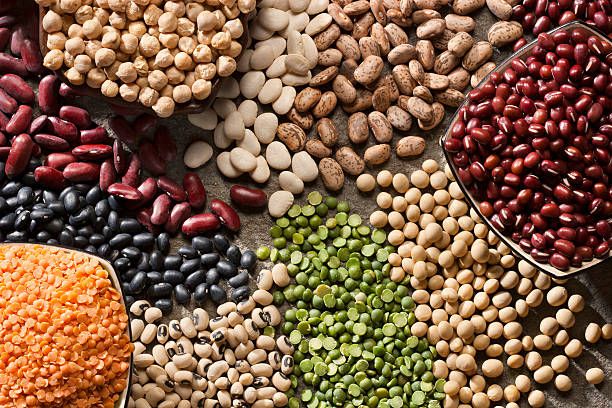
source: istockphoto
Put the peeled beans in a blender or grinding machine and grind until smooth. Add a little water if necessary to help with the grinding process. You want to achieve a smooth grinded product.
Transfer the grinded skin to a large mixing bowl and add the chopped onions, scotch bonnet pepper, and salt. Mix well until all ingredients are well combined.
Heat the vegetable oil in a frying pan or deep fryer. The oil should be hot enough to sizzle when a small drop of the grinded bean is added to it.
Using a tablespoon, scoop the grinded bean and drop it gently into the hot oil. Fry until the akara is golden brown on both sides, turning occasionally with a slotted spoon.
Remove the akara from the oil and place it on a basket to drain any excess oil.
Repeat the process with the remaining grinded beans until it is all used up.
Akara can be served on its own as a snack or as a breakfast food with bread, pap (cornmeal porridge), or custard. It can also be paired with other Nigerian dishes, such as rice and stew, or eaten with yams, plantains, or potatoes.
Akara is a delicious and nutritious Nigerian snack that is easy to make and loved by many.
Detailed preparation of moimoi
Moimoi, also known as moin moin, is a popular Nigerian dish made from grinded beans that are mixed with spices, onions, and other ingredients, and then steamed until it's tick like tuwo.
Let's check the step-by-step guide on how to make moimoi:
Ingredients:
2 cups of black-eyed beans
1 onion, finely chopped
1 red bell pepper, finely chopped
1 scotch bonnet pepper, finely chopped
1 teaspoon of salt
1/2 cup of vegetable oil
1 cup of water
Foil or banana leaves for wrapping. Nylon can also be used.
Instructions:
Soak the beans in water for at least 6 hours or overnight to soften them. Drain the water and peel off the skin of the beans by rubbing them together in a bowl of water.
If you don't want to use that process, you can still pound the beans in your mortar to remove skin.
Put the peeled beans in a grinding machine and grind until it's smooth. Add a little water if necessary to help with the blending process.
Transfer the bean to a large mixing bowl and add the chopped onions, red bell pepper, scotch bonnet pepper, salt, and vegetable oil. Mix well until all ingredients are well combined.
Add the water and mix well until the bean is smooth and well combined.
Prepare the foil or banana leaves by cutting them into rectangular pieces and folding them to form small bowls.
You can still make use of nylon, depending on which one you want to use.
Pour the beans into the foil or banana leaf bowls, or nylon filling them about two-thirds full.
Place it in a steamer or large pot and steam over medium heat for about 45-60 minutes, or until the moimoi is firm and cooked through.
Our delicious moi moi is ready to be served.
Moimoi can be served warm or cold and is often paired with other Nigerian dishes, such as rice, stew, or bread. It can also be eaten as a snack on its own or with pap (cornmeal porridge) or custard.
Moimoi is a delicious and nutritious Nigerian dish that is loved by many.
What are the nutritional values of beans
Beans are highly nutritious food that is packed with protein, fiber, vitamins, minerals, and other important nutrients.
Here are some of the key nutritional values of beans:
Protein: Beans are excellent source of protein, with one cup of cooked beans containing approximately 15 grams of protein, which is essential in building the body's systems.
Fiber: Beans are high in dietary fiber, which can help to promote healthy digestion, regulate blood sugar levels, and reduce the risk of any heart's sicknesses. One cup of cooked beans contains about 15 grams of fiber.
Vitamins and minerals: Beans are rich in a lot of essential vitamins and minerals, including folate, iron, magnesium, potassium, and zinc. These nutrients are important for maintaining healthy bones, muscles, and organs, as well as supporting the immune system, and the whole body at large.
Low in fat: Most varieties of beans are low in fat, making them a great option for people who are looking to reduce their fat intake or maintain a healthy weight.
Beans are nutritious food that can be incorporated into a wide variety of meals and snacks. They are great source of plant-based protein, fiber, vitamins, and minerals, and can help to support the health and wellbeing.
Which part of Nigeria produces beans the most?
According to the latest statistics from the National Bureau of Statistics of Nigeria, the top bean producing states in Nigeria are:
Kaduna State
Niger State
Taraba State
Kano State
Katsina State
These five states are responsible for the majority of the beans produced in Nigeria, with Kaduna State being the top producer. Other states that also produce significant amounts of beans include Plateau, Bauchi, Adamawa, and Gombe.
How is it being cultivated
Beans are generally grown as annual crop in Nigeria, and they can be grown in almost lots of soil types.
Land preparation: The land is cleared of weeds, rocks, and other debris, and the soil is tilled to a depth of about 10-15 cm to prepare a suitable seedbed.
Seed selection and planting: High-quality bean seeds are selected and planted in rows in the tilled soil. The spacing between rows and seeds depends on the variety of beans being grown and the farming system being used.
Fertilizer application: Depending on the soil fertility and nutrient needs of the beans, fertilizers may be applied at the time of planting or during the growing season to improve yield and quality.
Weed control: Weeds can compete with beans for nutrients, sunlight, and water, so they must be controlled by hoeing, hand weeding, or herbicide application.
Pest and disease management: Beans are being attacked to a lot of pests and diseases, including aphids, mites, beetles, fungi, and viruses. Appropriate control measures should be taken to prevent or minimize damage to the crop.
Harvesting: Beans are harvested when the pods are mature and dry, usually 3-4 months after planting. The beans are usually hand-picked, and care should be taken to avoid damage to the pods or beans.
Post-harvest handling: The harvested beans are usually dried, threshed, and winnowed to remove the pods, chaff, and other debris. The beans can then be stored in a cool, dry place or sold in the market.
Bean cultivation requires proper land preparation, seed selection and planting, fertilizer application, weed and pest control, and post-harvest handling to achieve good yields and high-quality beans.
Farmers in Nigeria are using different methods and techniques to grow beans, depending on their location, resources, and farming system.
Which country in Africa consumes Beans the most?
Beans is a food in many countries in Africa, and they are consumed widely across the continent.
However, it is difficult to determine which country in Africa consumes the most beans, as consumption patterns can vary greatly depending on cultural and economic.
That being said, some of the countries that are known to have a high consumption of beans in Africa include Nigeria, Kenya, Uganda, Tanzania, and Ethiopia. In Nigeria, for example, beans is a popular food that is consumed in so many forms, such as beans soup, akara, and moi moi, among others.
In Kenya, beans is a common ingredient in dishes such as githeri, a stew made with beans and maize.
Beans is an important source of nutrition and income for many people in Africa, and they play a significant role in the food systems of many countries on the continent.
Does beans have any side effect?
Beans are generally safe and healthy to consume for most people, and they are good source of protein, fiber, vitamins, and minerals. However, some individuals may experience side effects after consuming beans, especially if they eat too much or have certain medical conditions.
Gas and bloating: Beans contain complex sugars and carbohydrates that can be difficult to digest, leading to gas and bloating. Soaking and cooking beans properly can help reduce these symptoms.
Mineral absorption inhibition: Beans contain compounds called phytates that can inhibit the absorption of certain minerals, such as iron and zinc. This can be a concern for individuals who rely heavily on beans as a dietary source of these minerals.
Gout: Beans contain purines, which can be broken down into uric acid in the body. High levels of uric acid can increase the risk of gout, a type of arthritis.
Interference with medication: Beans contain compounds that can interfere with the absorption and effectiveness of certain medications, such as antibiotics and blood thinners. Individuals taking these medications should consult with their healthcare provider before consuming large amounts of beans.
Overall, beans are a healthy and nutritious food that can be enjoyed as part of a balanced diet. However, individuals who experience discomfort or have certain medical conditions should consult with their healthcare provider before consuming large amounts of beans.
Is it good for both children and adults?
Yes, beans are generally good for both children and adults, as they are a good source of protein, fiber, vitamins, and minerals. Beans are important food for children, as they provide important nutrients that are necessary for growth and development.
However, parents should be aware that young children may have difficulty digesting beans and may be more prone to gas. It is important to introduce beans gradually and in small amounts to avoid gastrointestinal discomfort.
Parents can also soak and cook beans properly to help reduce the risk of digestive problems.
Beans can be a healthy and nutritious food for both children and adults, and they can be prepared in a lot of ways to suit different tastes. It is important to include a variety of foods in the diet to ensure adequate nutrient intake.
conclusion
Thank you all for reading my post on beans. My next agenda is telling you all how groundnut oil is being produced in Nigeria. Thank you all.
